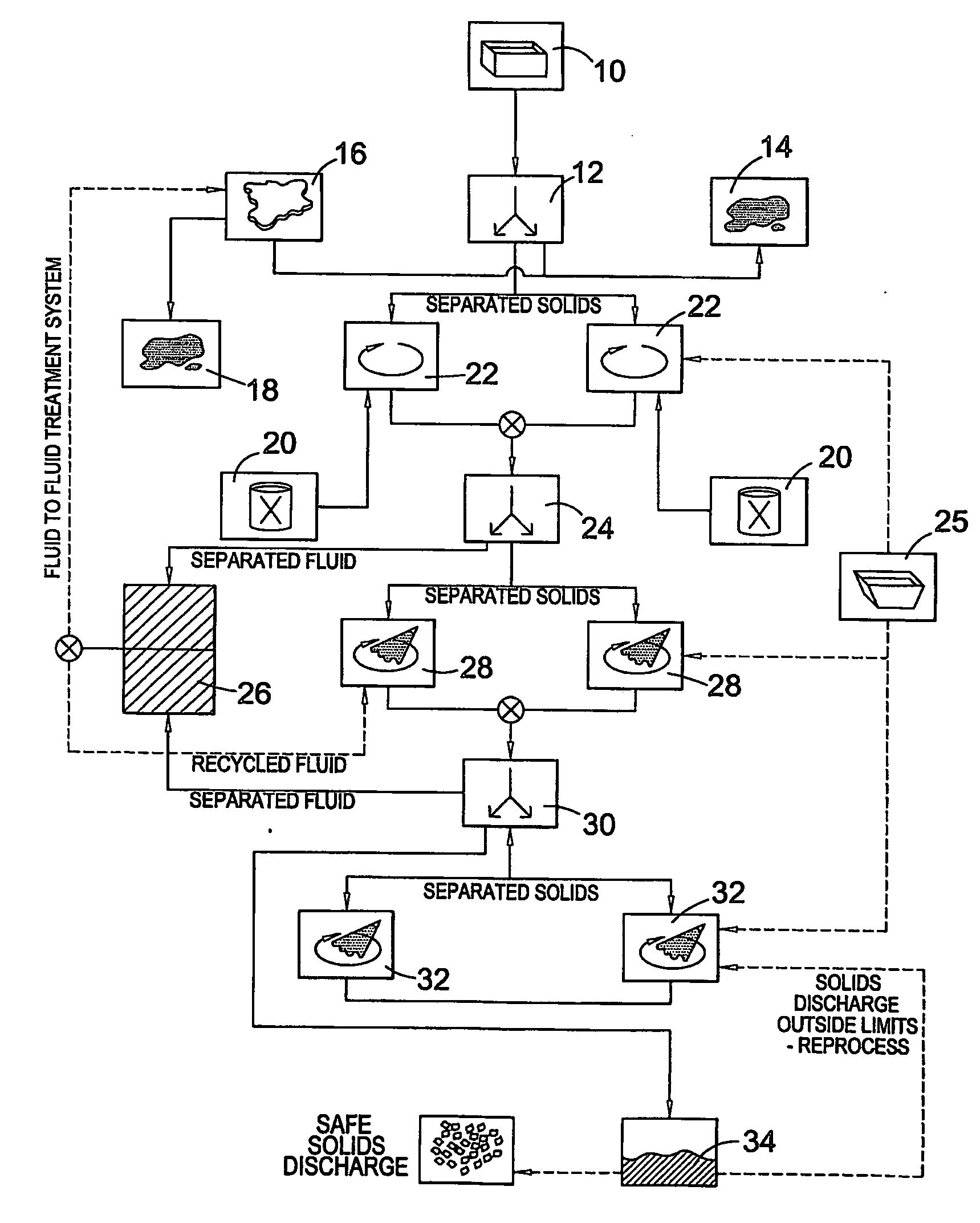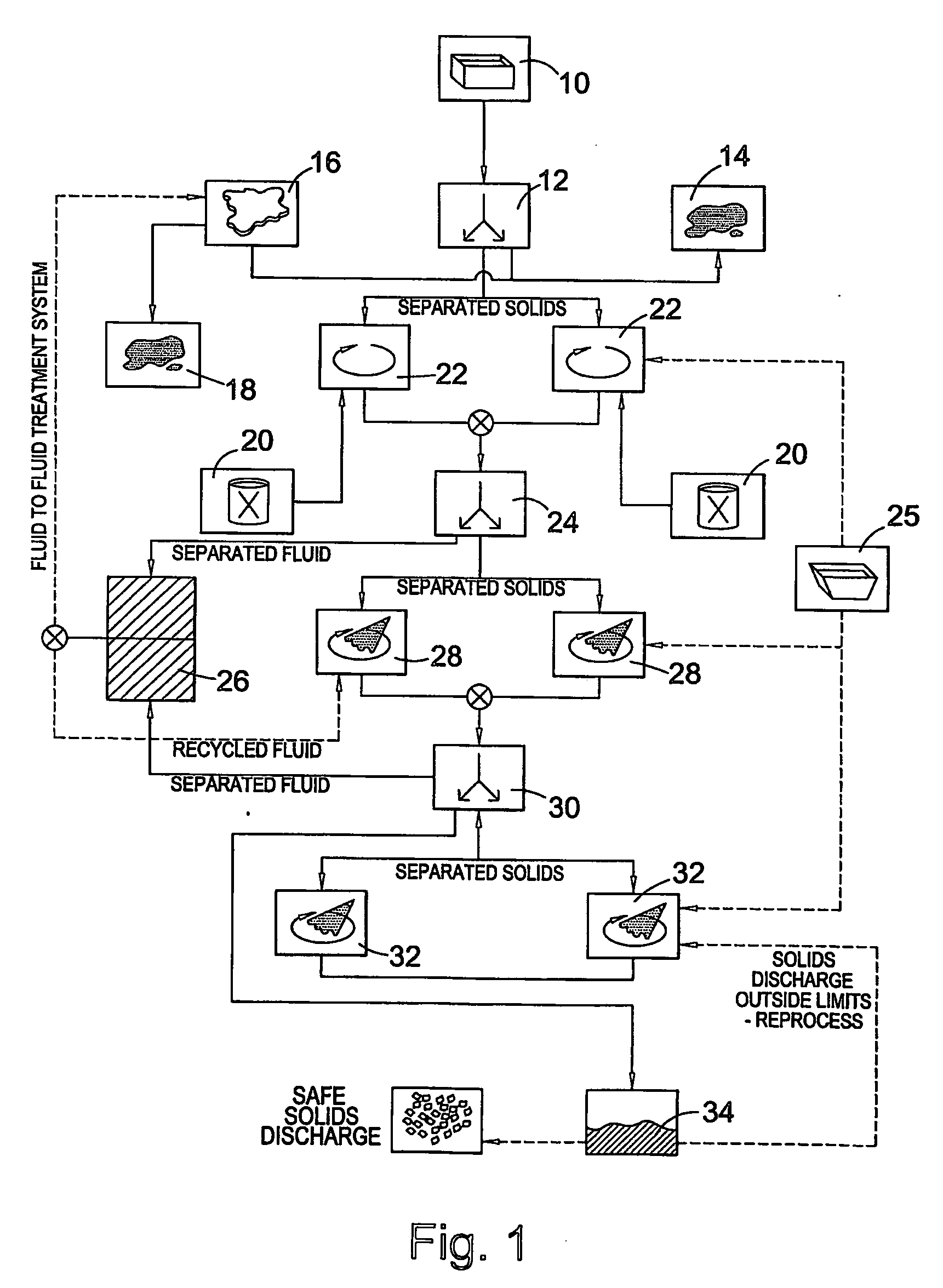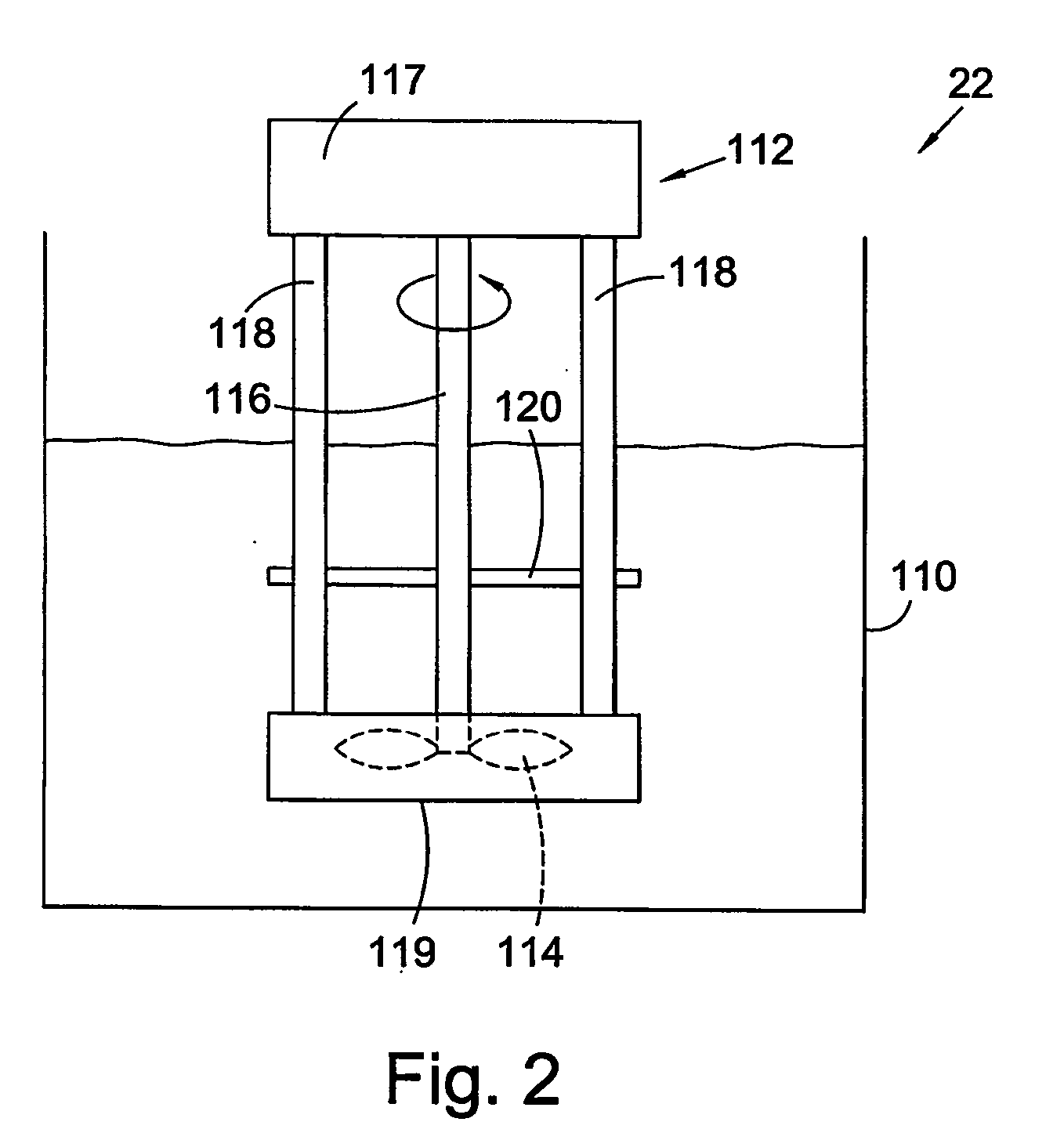Waste solid cleaning
a technology of solid cleaning and oil, applied in the direction of contaminated soil reclamation, mixing methods, separation processes, etc., can solve the problems of oil-contaminated drill cuttings' disposal, environmental pollution, and its own environmental problems, and achieve the effect of improving the extraction of oil
- Summary
- Abstract
- Description
- Claims
- Application Information
AI Technical Summary
Benefits of technology
Problems solved by technology
Method used
Image
Examples
example 1
[0147] Oil based mud slops (hereinafter referred to as raw slops) were obtained as a result of pit cleaning activities on a mobile offshore installation in the North Sea. The raw slops contain low toxicity mineral base oil, water barites and sand / silt contaminants—1.915SG (i.e. specific gravity) and 28.61% oil by weight.
[0148] The process of treating the raw slops is set out below.
Step 1
[0149] 1. Sample A—raw slops. 250 litres of raw slops were processed resulting in 25 litres of oily solids comprising 16.11% oil by weight and 225 litres of liquid extract comprising 12.5% oil by weight.
Step 2
[0150] 1. 2.5 litres of a 10% surfactant solution and 25 litres of salt water was added to 25 litres of the oily solids obtained in Step 1. The surfactant is a proprietary product—SP107, available from Surface Technologies Solutions Ltd, Watermark House, Heriot-Watt Research Park, Avenue North, Edinburgh EH14 4AP. This was thoroughly mixed at 20° C. for about 10 minutes.
[0151] 2. On sepa...
example 2
[0161] The object of this Example was to try different experimental conditions and see how differences in mixing and reducing the particle sizes affected the % of oil in the material.
[0162] In all of the results below in Examples 2A-2F, a batch of oil-contaminated material of 0.5 m3 was used which had a weight of 0.8 tonnes. Additionally, the same surfactant of SP107 (Trade Name) from SAS Ltd. as used in Example 1 was used with a concentration of 7.5%.
[0163] The % of oil on solids in each of the Experiments below was measured using gas chromatography (GC). Gas chromatography (GC) is a highly accurate method in which to measure the % of oil in the material. This is in contrast to previously used retort methods.
[0164] Furthermore, the same flow process as clearly illustrated in FIGS. 13 to 16 remain unchanged in each of the Experiments detailed below.
example 2a
[0165] In a first experiment, raw slops were used.
[0166]FIGS. 13 and 14 clearly explain the process as shown in FIG. 1 specifically for raw slops.
[0167] In this experiment, the raw slops are subjected to an electrostatic pulse burst system in an attempt to break the oil in water emulsion prior to mixing.
[0168] The raw slops were then mixed in an air driven STEMDRIVE (Trade Name) fluidic mixer for 10 minutes. A significant amount of foaming was found to occur with a resulting “RAG” (i.e. scum layer) being formed. It was difficult to recover oil from this “RAG” layer.
[0169] As illustrated in FIG. 14, the slops were then subjected to two rinsing steps.
[0170] At each stage of the process, the % of oil on solids was measured using gas chromatography (GC). These results are shown below in Table 2.
TABLE 2TotalTotalTotalHydrocarbonsTotalHydrocarbonsHydro-(g / kgHydrocarbons(g / kgcarbonssample)percentsample)percentDRYDRYWETWETRaw573.457.34159.4015.94SlopsSolids94.99.4969.646.96Post MixSo...
PUM
| Property | Measurement | Unit |
|---|---|---|
| particle size | aaaaa | aaaaa |
| particle size | aaaaa | aaaaa |
| particle size | aaaaa | aaaaa |
Abstract
Description
Claims
Application Information
 Login to View More
Login to View More - R&D
- Intellectual Property
- Life Sciences
- Materials
- Tech Scout
- Unparalleled Data Quality
- Higher Quality Content
- 60% Fewer Hallucinations
Browse by: Latest US Patents, China's latest patents, Technical Efficacy Thesaurus, Application Domain, Technology Topic, Popular Technical Reports.
© 2025 PatSnap. All rights reserved.Legal|Privacy policy|Modern Slavery Act Transparency Statement|Sitemap|About US| Contact US: help@patsnap.com



